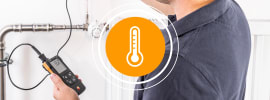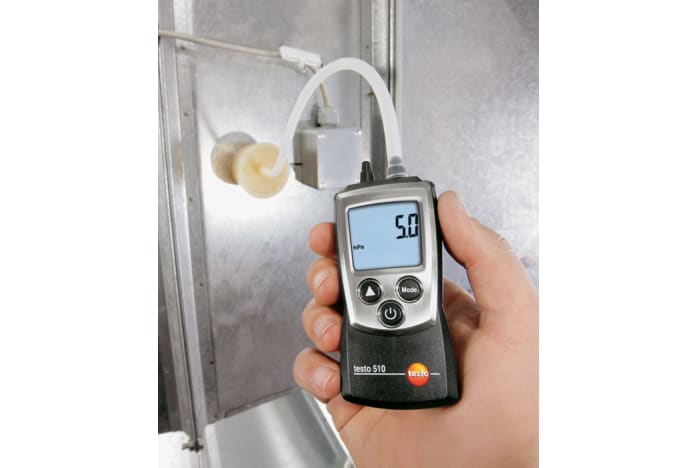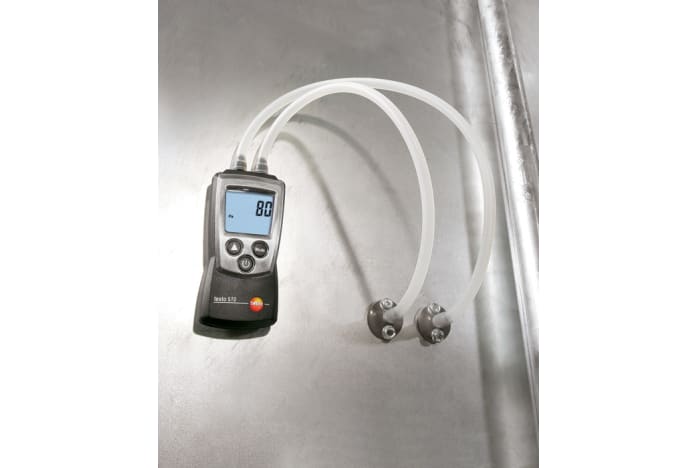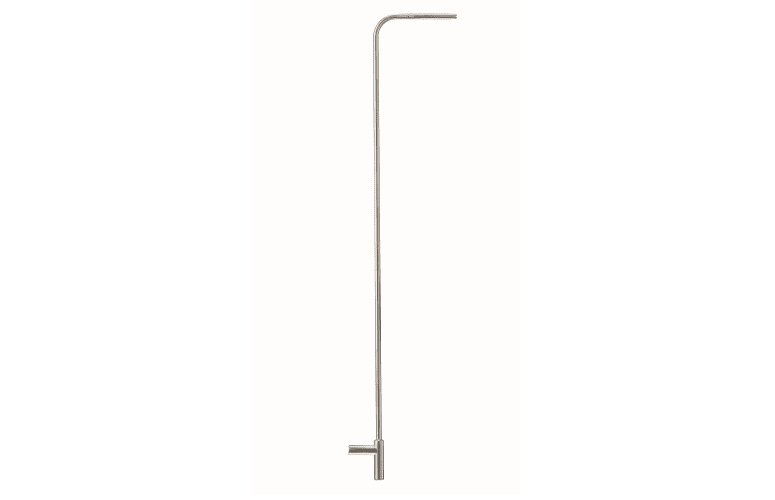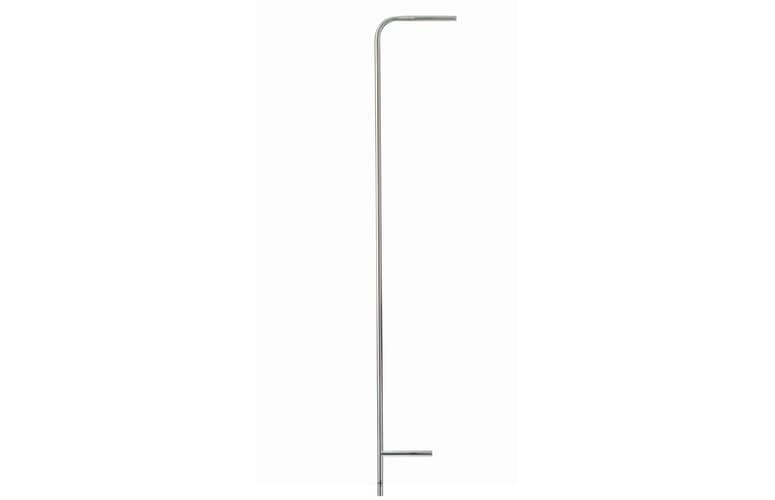The following units can be selected on the testo 510 differential pressure measuring instrument:
- Pa
- hPa
- mbar
- mmH2O
- mmHg
- inH2O
- inHg
- psi
- m/s
- fpm
In addition, you can measure the flow in the ventilation duct with a Pitot tube that is available as an option – from 10 to 100 m/s.
Practical and precise: key advantages offered by the differential pressure measuring instrument
- Precise: the differential pressure measurement has temperature and air density compensation for accurate readings
- Uncomplicated: small, handy and easy to operate with just three buttons
- Clever: you can work with your hands free thanks to magnets on the rear of the instrument. When there is poor visibility, such as in dark surroundings, the illuminated display makes it easier for you to work
- Reliable: a belt pouch and plug-on protective cap mean the differential pressure measuring instrument can be safely stowed away and it is also well-secured during measurement thanks to a wrist strap
- Ready to go: the silicone connection hose is included in the testo 510 set. So you can start your measurements straight away

